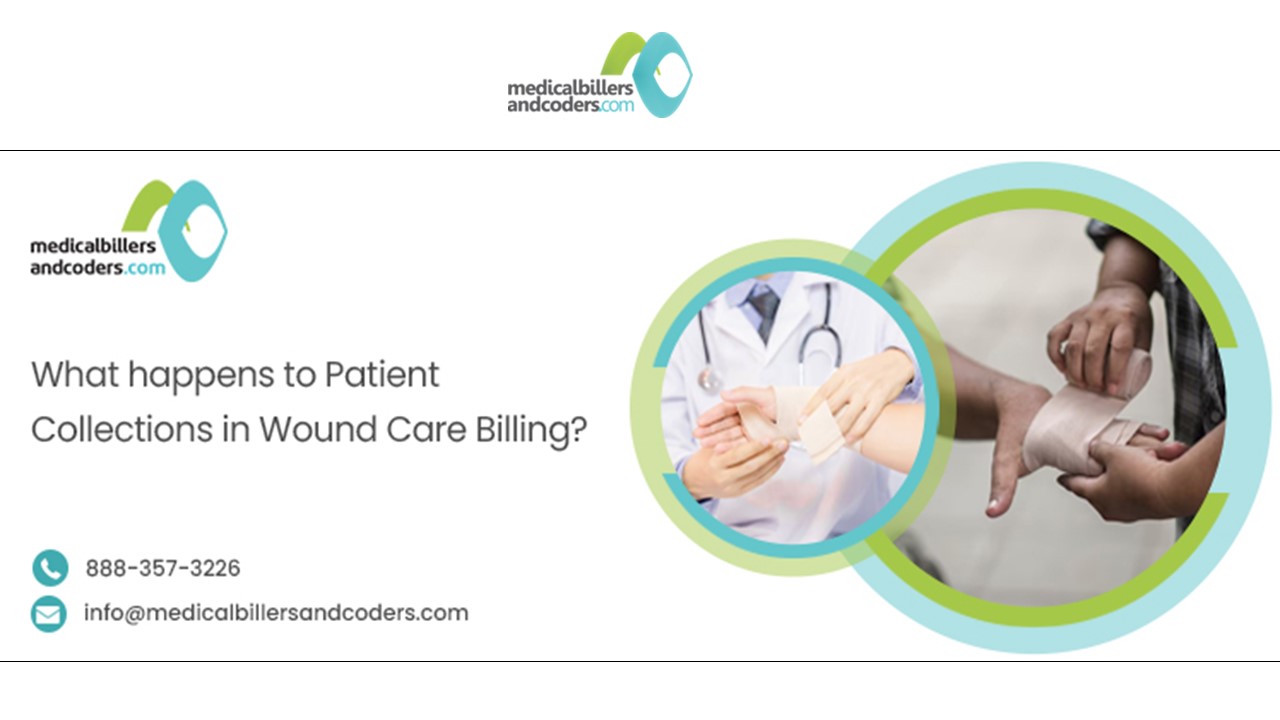What happens to Patient Collections in Wound Care Billing? - PowerPoint PPT Presentation
Title:
What happens to Patient Collections in Wound Care Billing?
Description:
In this article, we discussed details of patient collections in wound care billing, offering insights and tips to help providers streamline their revenue cycle. – PowerPoint PPT presentation
Number of Views:0
Title: What happens to Patient Collections in Wound Care Billing?
1
(No Transcript)
2
What happens to Patient Collections in Wound Care
Billing?
Patient collections in wound care billing are the
payments that patients make for their wound care
services. This can include copays, deductibles,
and coinsurance. Patient collections are an
important part of a wound care practices revenue
cycle, and they can help to offset the costs of
providing care to patients. In this article, we
will discuss the details of patient collections
in wound care billing, offering insights and tips
to help providers streamline their revenue
cycle. What happens to Patient Collections in
Wound Care Billing? Once a patient has received
wound care services, the practice will submit a
claim to the patients insurance company for
reimbursement. The insurance company will review
the claim and determine how much they will pay.
The patient will be responsible for any remaining
balance, which is called patient responsibility.
The practice will send a bill to the patient for
their patient responsibility. The patient can pay
the bill in full, or they can set up a payment
plan. The practice may also offer financial
assistance options to patients who qualify. If
the patient does not pay their patient
responsibility, the practice may send the account
to collections. This means that a collection
agency will attempt to collect the debt from the
patient. Challenges in Patient Collections for
Wound Care Providers
3
What happens to Patient Collections in Wound Care
Billing?
- Insurance Complexity The complexity of insurance
claims in wound care billing can often lead to
denials or delays in reimbursement. This, in
turn, affects the amount the patient owes, making
it challenging to communicate accurate billing
information. - High-Deductible Health Plans The prevalence of
high-deductible health plans means that patients
are responsible for a significant portion of
their healthcare costs. Wound care providers must
navigate these high deductibles while ensuring
patients understand their financial
responsibilities. - Patient Communication Effective communication
with patients about their financial
responsibilities, co-pays, and outstanding
balances is crucial. Patients should be informed
of their financial obligations clearly and
promptly. - Patient Collections Best Practices for Wound Care
Providers - Collect Co-pays Upfront This is the easiest way
to ensure that patients pay their portion of the
bill. - Verify Insurance Information Accurate
verification of patients insurance details helps
in submitting clean claims. This minimizes
denials and ensures the patients share of the
bill is calculated correctly. - Educate Patients Clear and transparent
communication is key. Educate patients about
their insurance coverage, co-pays, and any
out-of-pocket expenses they might incur.
Providing written estimates can help manage
expectations.
4
What happens to Patient Collections in Wound Care
Billing?
- Streamlined Billing Implement an
efficient billing process that minimizes errors
and ensures claims are submitted promptly.
Utilize billing software and trained staff to
handle billing tasks effectively. - Payment Plans Offer flexible payment plans for
patients with high deductibles or financial
constraints. This can make it easier for them to
manage their medical bills. - Work with Patients who are struggling to Pay If
a patient is having trouble paying their bill,
the practice should work with them to develop a
financial assistance plan. This may involve
reducing the patients payment amount or offering
a longer payment plan. - Follow-Up Consistent follow-up is essential for
collecting outstanding balances. Send regular
reminders and statements to patients, and dont
hesitate to contact them directly if necessary. - Use Technology Leverage technology to streamline
billing and collections processes. Electronic
billing and online payment portals can make it
more convenient for patients to pay their bills. - Training and Compliance Ensure that your billing
staff is well-trained in wound care billing and
compliance regulations. Regularly update your
team on changes in billing codes and regulations. - Navigating patient collections in wound care
billing is a critical aspect of managing a
successful practice. Providers must be
well-versed in insurance complexities, patient
communication, and regulatory compliance to
ensure a smooth revenue cycle. By implementing
best practices and leveraging technology and
expert
5
What happens to Patient Collections in Wound Care
Billing?
assistance, wound care providers can optimize
their patient collections processes, ultimately
improving their financial health while continuing
to provide top-notch care to their patients. For
further information about our wound care billing
services, please reach out via email
at info_at_medicalbillersandcoders.com or by
calling 888-357-3226.









![NOTE: To appreciate this presentation [and insure that it is not a mess], you need Microsoft fonts: PowerPoint PPT Presentation](https://s3.amazonaws.com/images.powershow.com/7010443.th0.jpg?_=20150809053)
![NOTE: To appreciate this presentation [and insure that it is not a mess], you need Microsoft fonts: PowerPoint PPT Presentation](https://s3.amazonaws.com/images.powershow.com/7012918.th0.jpg?_=20201123045)

![NOTE:%20To%20appreciate%20this%20presentation%20[and%20insure%20that%20it%20is%20not%20a%20mess],%20you%20need%20Microsoft%20fonts:%20%20 PowerPoint PPT Presentation](https://s3.amazonaws.com/images.powershow.com/P1251328625QzGDe.th0.jpg?_=201805240711)



![NOTE:%20To%20appreciate%20this%20presentation%20[and%20insure%20that%20it%20is%20not%20a%20mess],%20you%20need%20Microsoft%20fonts:%20%20 PowerPoint PPT Presentation](https://s3.amazonaws.com/images.powershow.com/P1252428420wZXYW.th0.jpg?_=20180601048)













